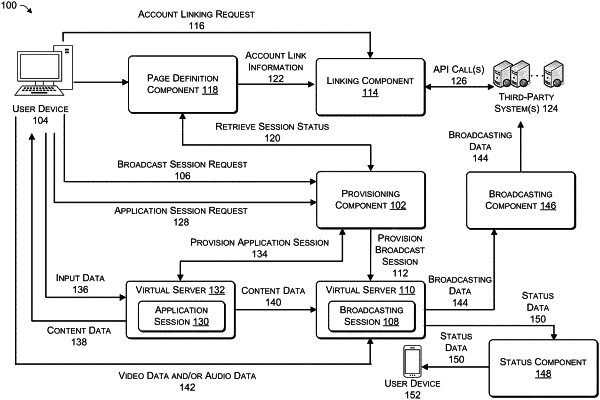| CPC H04L 65/1069 (2013.01) [A63F 13/35 (2014.09); A63F 13/86 (2014.09); H04L 67/10 (2013.01)] | 20 Claims |

|
1. A method comprising:
receiving, from a user device, a request to create a broadcasting session;
based at least in part on receiving the request, launching the broadcasting session on a first virtual server;
establishing a first network connection between the first virtual server and the user device;
receiving, from the user device, identifier data associated with a game;
based at least in part on receiving the identifier data, launching the game on a second virtual server;
establishing a second network connection between the first virtual server and the second virtual server;
establishing a third network connection between the second virtual server and the user device;
receiving, by the second virtual server and using the third network connection, input data from the user device;
generating, by the second virtual server and using the input data, content data representing a state of the game;
receiving, by the first virtual server and using the second network connection, the content data from the second virtual server;
receiving, by the first virtual server and using the first network connection, video data from the user device, the video data representing a user;
receiving, by the first virtual server and using the first network connection, audio data from the user device, the audio data representing user speech;
generating, by the first virtual server, broadcast content using the content data, the video data, and the audio data, the broadcast content including at least a video represented by the video data overlayed over a portion of visual content represented by the content data; and
sending, to one or more computing devices, broadcast data representing the broadcast content.
|